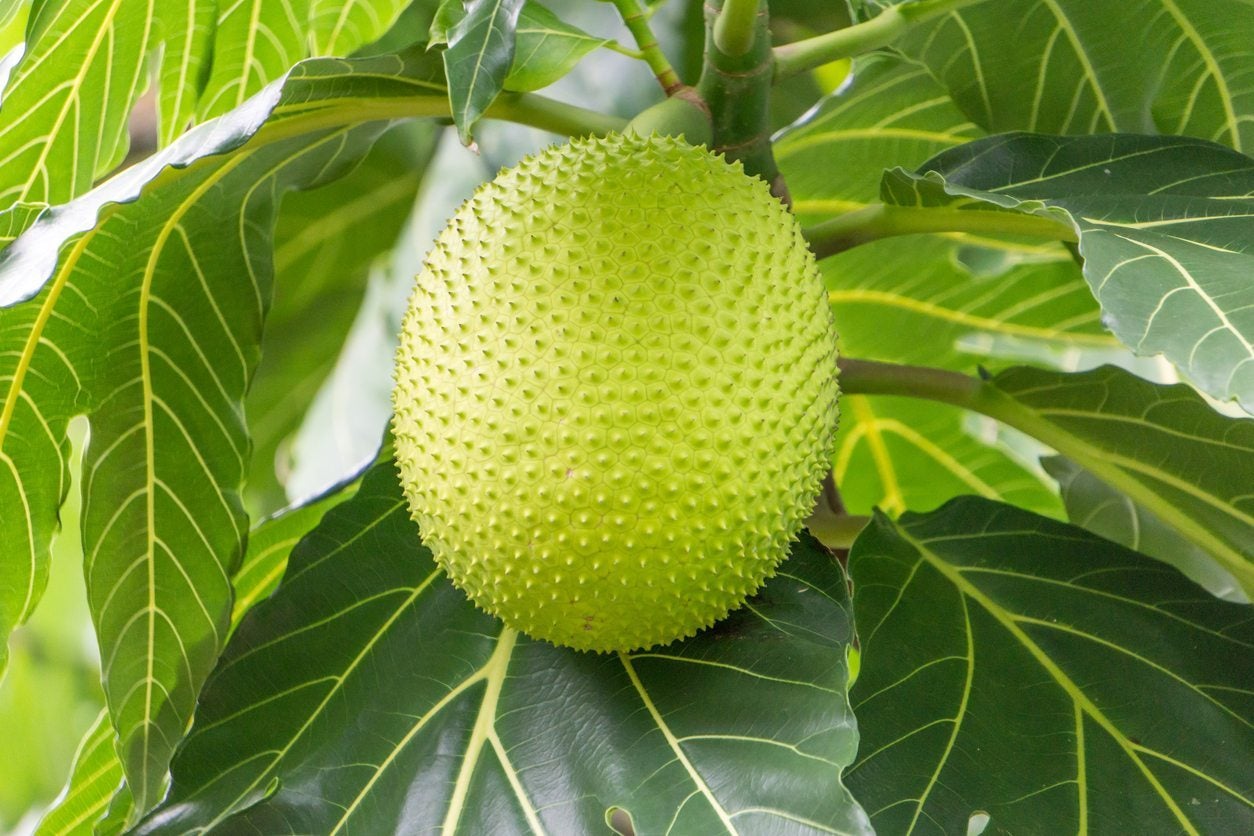Breadfruit Problems: Learn About Common Breadfruit Complications


Breadfruit is a commercially grown food in warm, moist climates. Not only can you eat the fruit, but the plant has lovely foliage that accents other tropical plants. In proper weather conditions, breadfruit problems are rare. However, occasional fungal diseases, minor pests, and cultural practices can cause problems with breadfruit. Avoiding breadfruit complications begins at installation and during establishment of the plants. Correct siting and soil type, as well as spacing and fertilizing, will develop healthy trees able to withstand most issues.
Breadfruit Growing Preferences
The tropical fruit known as breadfruit is native to New Guinea but has been widely distributed to many tropical regions, especially the Pacific islands. There are hundreds of varieties, each with attributes preferred in certain regions. The plant is suited for areas where temperatures of at least 60 degrees F. (16 C.) occur but fruits best where at least 70 degrees F. (21 C.). For gardeners that have trouble growing breadfruit, it is first important to examine the conditions in which they grow. Warm conditions are essential but so is full sun exposure for development of the fruit. Young plants should be kept in containers in 50% shade for the first few months before planting in ground. The soil should be deeply cultivated, well-draining, and fertile with a pH between 6.1 and 7.4. One of the more common breadfruit issues during establishment is allowing the plant to dry out. The plants are native to regions that have plenty of rainfall during at least half of the year. Once established, they can withstand short periods of drought but perform best when kept moderately moist. Feed container plants twice per week with liquid fertilizer and use compost tea early in the season for in ground plants.
Cultural Problems with Breadfruit
Most breadfruit issues start when plants are young and are related to incorrect cultural care. If soil is poor, the root system will not develop properly, limiting the plant's ability to gather water and nutrients as well as support itself. Young plants that dry out may die and need to be monitored daily to prevent such losses. The plants need to be installed in the ground in holes at least 15 inches (38 cm.) deep and 3 feet (1 m.) wide. Spacing is very important to prevent fungal diseases. Trees should be at least 25 feet (8 m) apart. Pruning after the tree is four years old to develop a strong leader and well-spaced branches is recommended but not necessary in some varieties. Lack of fruits is a common trouble growing breadfruit. Add about 4 pounds (2 kg.) of high phosphorus fertilizer per tree annually to increase blooms and fruits.
Breadfruit Problems from Insects and Disease
If all cultural conditions are satisfied and adequate care given but there are still breadfruit complications, look to disease or insects. The most common pests are unlikely to cause significant damage. These are mealybugs, scale, and aphids. Use horticultural oil such as neem several times during the growing season, once prior to flowering and again just as flowers open. Soft rot may be a fungal issue. Apply two sprays of Bordeaux mixture one month apart. The copper fungicide can also help with root rot and other fungal issues. In wild settings, set up a barrier to prevent grazing animals from eating the fruit and foliage. Breadfruit is considered to be a fairly easy plant to grow in zones that are suitable for it. There are even some varieties with moderate cold tolerance so growers in colder zones can give it a try.
Sign up for the Gardening Know How newsletter today and receive a free copy of our e-book "How to Grow Delicious Tomatoes".

Bonnie Grant is a professional landscaper with a Certification in Urban Gardening. She has been gardening and writing for 15 years. A former professional chef, she has a passion for edible landscaping.